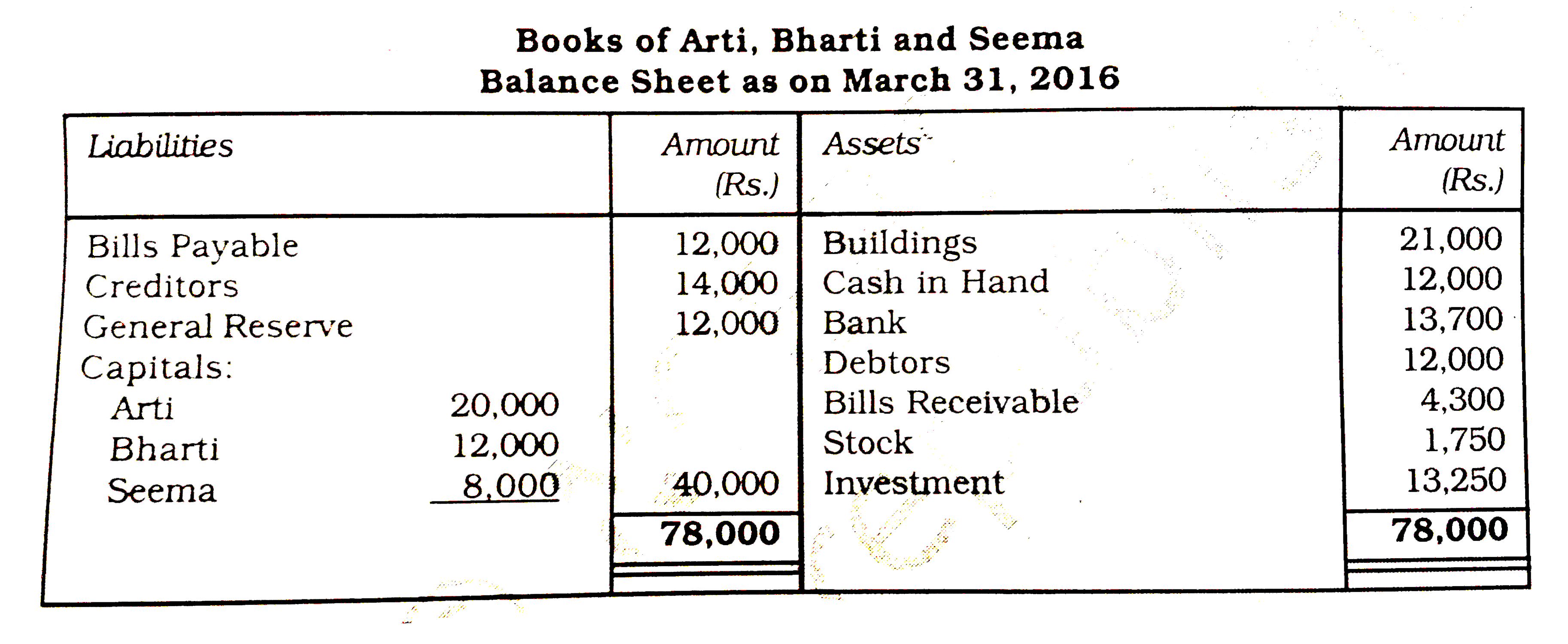Priyanka and arti decided to doneate Rs 1600 for the army windows let priyanka 's shares as 'x' and arti share as'y'
(a) form a lienar equation in two variables
(b) if priyanka donates thrice the amount donated by arti then find out the amount donated by both
The correct Answer is:(i) x+y=1600
(ii) priyanka =Rs 1200,ariti =Rs 400
To solve the problem step by step, we will follow the instructions given in the question.
Step 1: Form a Linear Equation
Let Priyanka's share be represented by x and Aarti's share be represented by y. According to the problem, the total amount donated by both is Rs. 1600. Therefore, we can write the equation as:
x+y=1600
Step 2: Formulate the Second Equation
The problem states that Priyanka donates thrice the amount donated by Aarti. This can be expressed as:
x=3y
Step 3: Substitute the Second Equation into the First Equation
Now we will substitute the value of x from the second equation into the first equation:
3y+y=1600
Step 4: Combine Like Terms
Combine the terms on the left side of the equation:
4y=1600
Step 5: Solve for y
Now, divide both sides of the equation by 4 to find the value of y:
y=16004=400
Step 6: Find the Value of x
Now that we have y, we can find x using the equation x=3y:
x=3×400=1200
Conclusion
Thus, Priyanka donated Rs. 1200 and Aarti donated Rs. 400.
Summary of the Solution
- Priyanka's donation (x) = Rs. 1200
- Aarti's donation (y) = Rs. 400
---
Let Priyanka's share be represented by x and Aarti's share be represented by y. According to the problem, the total amount donated by both is Rs. 1600. Therefore, we can write the equation as:
The problem states that Priyanka donates thrice the amount donated by Aarti. This can be expressed as:
Now we will substitute the value of x from the second equation into the first equation:
Combine the terms on the left side of the equation:
Now, divide both sides of the equation by 4 to find the value of y:
Now that we have y, we can find x using the equation x=3y:
Thus, Priyanka donated Rs. 1200 and Aarti donated Rs. 400.
- Priyanka's donation (x) = Rs. 1200
- Aarti's donation (y) = Rs. 400
Topper's Solved these Questions
- BOOK - CBSE COMPLEMENTARY MATERIALCHAPTER - LINEAR EQUATIONS IN TWO VARIABLES EXERCISE - PRACTICE TEST12videos
LINEAR EQUATIONS IN TWO VARIABLES
- BOOK - CBSE COMPLEMENTARY MATERIALCHAPTER - LINEAR EQUATIONS IN TWO VARIABLES EXERCISE - PART -C12videos
LINEAR EQUATIONS IN TWO VARIABLES
- BOOK - CBSE COMPLEMENTARY MATERIALCHAPTER - INTRODUCTION TO EUCLID'S GEOMETRYEXERCISE - PRACTICE TEST8videos
INTRODUCTION TO EUCLID'S GEOMETRY
- BOOK - CBSE COMPLEMENTARY MATERIALCHAPTER - LINES AND ANGLESEXERCISE - PRACTICE TEST8videos
LINES AND ANGLES
Similar Questions
Sam went for an outing with his friends.They went to dominos to enjoy the delicious pizza. He was enjoying the pizza with his friends and share with them by slicing it. During slicing the pizza. he noticed that the pair of linear equations formed. (i.e.,straight lines) Let these pair of linear equations be y - 2x = 1 and 5y-x=14.

If a pair of linear equations in two variables is inconsistent, then the lines represented by two ·equations are:View SolutionX,Y and Z were partners sharing profits in ratio of 1/2,1/3 and 1/6. Y retired on 1st April, 2018 and he decided that:
(i) Rs 20,000 out of the due amount will be donated after one year to Uttrakhand Chief Minister's Fund as his donation to meet natural calamity faced by the state, and
(ii) Balance to be paid to him after one year without interest.
Identify the values involved.View Solution
Knowledge Check
- Question 1 - Select One
In 1931, Pauling defined the electronegativity of an atom as the tendency of the atom to attract electrons to itself when combined in a compound. The implication is that when a covalent bond is formed, the electrons used for bonding need not be shared equally by both atoms. If the bonding electrons spend more time around one atom, that atom will have a ∂−charge, and consequently the other atom will have a ∂+ charge. In the extreme case, where the bonding electrons are round one atom all of the time, the bond is ionic. Pauling and others have attempted to relate the electronegativity difference between two atoms to the amount of ionic character in the bond between them.
Mulliken
In 1934, Mulliken suggested an alternative approach to electronegativity based on the ionization energy and electron affinity of an atom. Consider two atoms A and B. If an electron is transferred from A to B, forming ions A+ and B−, then the energy change is the ionization energy of atom A(IA) minus the electron affinity of atom B(EB), that is IA−EB. Alternatively, if the electron was transferred the other way to give B+ and A− ions, then the energy changed would be IB−IA. If A+ and B− are actually formed, then this process require less energy , and
(IA−EB)<(IB−EA)
Rerranging (IA+EA)<(IA−EB)
Now with respect to electronegativity for the same change, E.NA<E.NB.
Thus Mulliken suggested that electronegativity is proportional to I.E+E.A and could be regarded as the average of the ionization energy and the electron affinity of an atom.
Electronegativity =(I+E)2
Mulliken used I and E values measured in electron volts, and the values were about 2.8 times alrger than the Pauling values. It is to be noted that I.E. and E.A values are defined for singular gaseous atoms.
We have X atoms of A. if all the atoms gain one electron each the energy released is aeV. If Y atoms of A lose one electron each, then the energy absorbed is beV. Then the electronegativity of A on the Mulliken scale will be:Aa+b2B12(aX+bY)C12(a+b)×NaD12(aX+bY)×Na - Question 2 - Select One
Pankaj and Sushil invested some amount of money in the ratio of 3: 5for the same period in a business. They decided that at the end of year 20%profit was to be given to AIDS Control Society of India as a donation. Out of the remaining, 75% was to be reinvested and the rest of die profit was to be divided as interest on their capitals. If the difference in their shares is ₹ 1200. Find the total profit?
ARs. 18000BRs. 24000CRs. 20000Dnone of these - Question 3 - Select One
Pankaj and Sushil invested some amount of money in the ratio of 3: 5for the same period in a business. They decided that at the end of year 20%profit was to be given to AIDS Control Society of India as a donation. Out of the remaining, 75% was to be reinvested and the rest of die profit was to be divided as interest on their capitals. If the difference in their shares is ₹ 1200. Find the total profit?
A₹ 18000B₹ 24000C₹ 20000Dnone of these
Arti, Bharti and Seema are partners sharing profits in the proportion of 3:2:1 and their Balance Sheet as on March 31, 2016 stood as follows :

Bharti died on June 12, 2016 and according to the deed of the said partnership, her executors are entitled to be paid as under :
(a) The capital to her credit at the time of her death and interest thereon ∘10% per annum.
(b) Her proportionate share of reserve fund.
(c) Her share of profits for the intervening period will be based on the sales during that period, which were calculated as Rs.1,00,000. The rate of profit during past three years had been 10% on sales.
(d) Goodwill according to her share of profit to be calculated by taking twice the amount of the average profit of the last three years less 20%. The profits of the previous years were :
2013 – Rs.8,200
2014 – Rs.9,000
2015 – Rs.9,800
The investments were sold for Rs.16,200 and her executors were paid out. Pass the necessary journal entries and write the account of the executors of Bharti.View SolutionOn her birth day, Seema decided to donate some money to children of an orphanage home. If there were 8 children less, everyone would have got Rs.10 more. However, if there were 16 children more, everyone would have got Rs. 10 less. Let the number of children be x and the amount distributed by Seema for one child be y (in Rs.).
Based on the information given above, answer the following questions:

How much amount Seema spends in distributing the money to all the students of the Orphanage?View SolutionOn her birth day, Seema decided to donate some money to children of an orphanage home. If there were 8 children less, everyone would have got Rs.10 more. However, if there were 16 children more, everyone would have got Rs. 10 less. Let the number of children be x and the amount distributed by Seema for one child be y (in Rs.).
Based on the information given above, answer the following questions:

The equations in terms x and y areView SolutionOn her birth day, Seema decided to donate some money to children of an orphanage home. If there were 8 children less, everyone would have got Rs.10 more. However, if there were 16 children more, everyone would have got Rs. 10 less. Let the number of children be x and the amount distributed by Seema for one child be y (in Rs.).
Based on the information given above, answer the following questions:

How much amount is given to each child by Seema?View SolutionRajesh want to chose a best plan for his mobile phone. He has 2 options available with him. The first plan of company A, cost Rs 20 per month, with costing an additional 25 paise per minute.
The second plan of company B charge Rs 40 per month, but calls cost 8 paise per minute. These two situations are shown below in the form of linar equations.
The total cost of the two company's are given as :
y=0.25x+20
andy=0.8x+40
Where, x is the minutes used any y is the total cost per month.

If Rajesh decides to take first plan and calls for 90 minutes in a month, then how much amount he will have to pay ?View Solution

